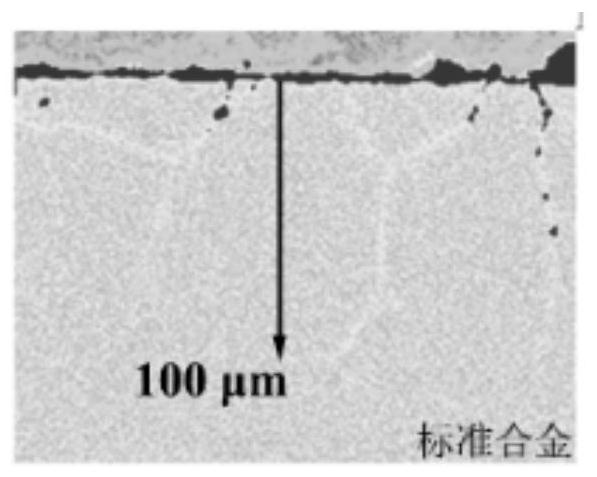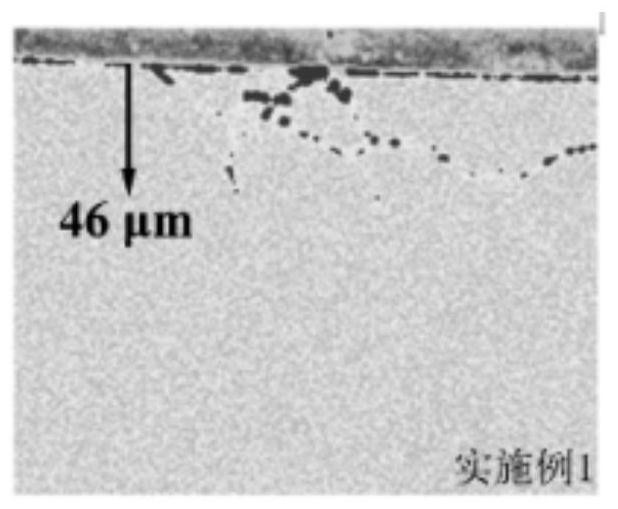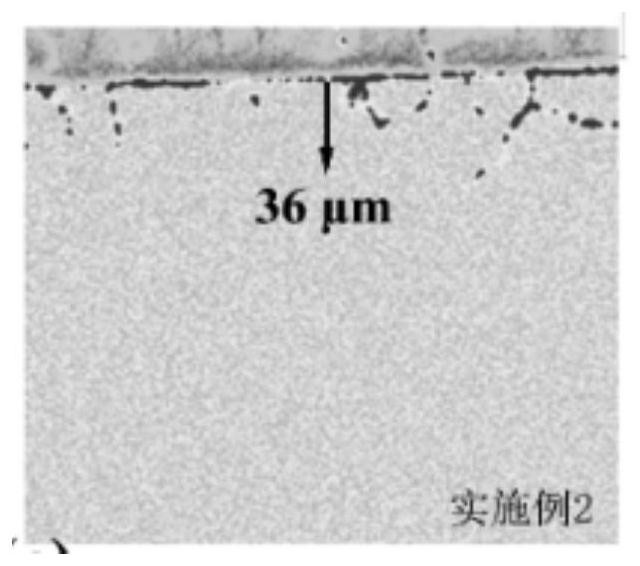Method for improving the corrosion resistance of nickel-based superalloys against tellurium and nickel-based superalloys
A technology for nickel-based superalloys and corrosion performance, applied in the field of nickel-based superalloys to improve the corrosion resistance of tellurium, to achieve the effect of weakening surface cracking, good economic benefits, and overcoming serious short plates
- Summary
- Abstract
- Description
- Claims
- Application Information
AI Technical Summary
Problems solved by technology
Method used
Image
Examples
Embodiment 1
[0033] Embodiment 1: Mn content is 1.02wt.% (table 1), and the depth of intergranular diffusion of tellurium is 46 μ m ( Figure 1b ), the depth of intergranular cracking is consistent with the above-mentioned diffusion depth ( Figure 2b ), tensile strength 682MPa, yield strength 388MPa, elongation at break 47%.
Embodiment 2
[0034] Embodiment 2: Mn content is 2.11wt.% (table 1), and the depth of intergranular diffusion of tellurium is 36 μ m ( Figure 1c ), the depth of intergranular cracking is consistent with the above-mentioned diffusion depth ( Figure 2c ), tensile strength 698MPa, yield strength 387MPa, elongation at break 48%.
Embodiment 3
[0035] Embodiment 3: Mn content is 3.23wt.% (table 1), and the depth of intergranular diffusion of tellurium is 32 μ m ( Figure 1d ), the depth of intergranular cracking is consistent with the above-mentioned diffusion depth ( Figure 2d ), tensile strength 817MPa, yield strength 391MPa, elongation at break 54%.
[0036]Comparing the data of the standard alloy and the above examples, it can be seen that as the Mn content increases to 1wt.%, the intergranular diffusion depth of tellurium decreases significantly and further decreases with the increase of Mn content. Correspondingly, the depth of cracking on the alloy surface also shows the same trend. Tensile mechanics tests show that after increasing the Mn content, the tensile strength and yield strength are significantly improved with the relief of surface corrosion and cracking. In summary, based on the composition of standard nickel-based superalloys, the alloy exhibits excellent resistance to tellurium corrosion after t...
PUM
| Property | Measurement | Unit |
|---|---|---|
| tensile strength | aaaaa | aaaaa |
| yield strength | aaaaa | aaaaa |
| tensile strength | aaaaa | aaaaa |
Abstract
Description
Claims
Application Information
 Login to View More
Login to View More - Generate Ideas
- Intellectual Property
- Life Sciences
- Materials
- Tech Scout
- Unparalleled Data Quality
- Higher Quality Content
- 60% Fewer Hallucinations
Browse by: Latest US Patents, China's latest patents, Technical Efficacy Thesaurus, Application Domain, Technology Topic, Popular Technical Reports.
© 2025 PatSnap. All rights reserved.Legal|Privacy policy|Modern Slavery Act Transparency Statement|Sitemap|About US| Contact US: help@patsnap.com



